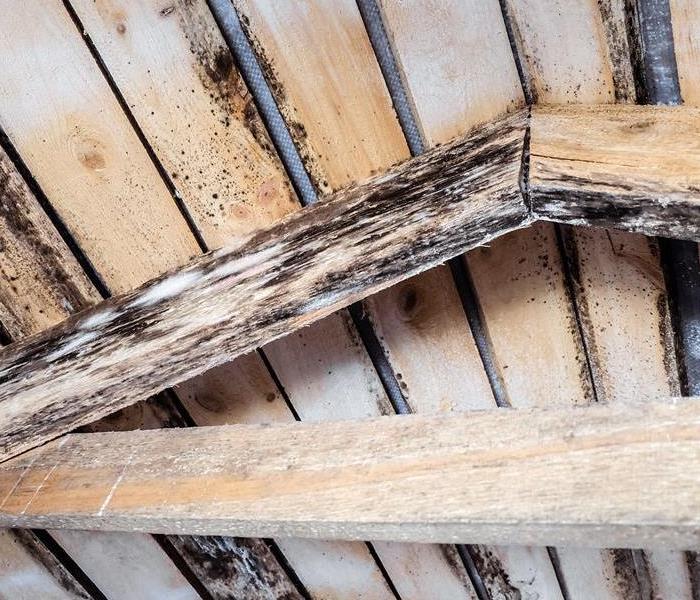Mold Growth in Insulation: What to Do When It's Hidden
10/29/2023 (Permalink)
 Mold growth within insulation can be a threat to your home. Minimizing potential damage after a water loss
Mold growth within insulation can be a threat to your home. Minimizing potential damage after a water loss
Mold growth in insulation is a common but often overlooked issue. When mold is hidden within insulation, it can be challenging to detect and address. In this blog, we will explore what to do when faced with mold in insulation, without discussing associated health risks or concerns. By understanding the signs, prevention methods, and appropriate remediation techniques, homeowners can effectively manage mold growth within their insulation.
Signs of Mold in Insulation
Identifying mold growth within insulation can be tricky, as it often remains hidden from sight. However, there are a few indicators to watch out for. Musty odors emanating from the insulation may suggest mold presence. Discoloration, particularly dark spots or patches on the surface, can also be a sign. Peeling or damaged insulation may reveal mold growth underneath. Regular inspection and awareness of these signs can help homeowners detect mold in insulation early and prevent further damage.
Prevention Measures
Preventing mold growth in insulation starts with addressing moisture-related issues. Identify and fix any leaks or sources of water intrusion that can provide the ideal conditions for mold growth. Improve ventilation in areas where insulation is present to allow for the proper exchange of air and reduce humidity levels. Ensure proper installation of insulation, avoiding compressing the material, as trapped moisture can promote mold growth. Conduct regular inspections and maintenance to identify and address any potential moisture problems promptly.
Remediation Techniques
Remediation of mold in insulation should be undertaken cautiously to prevent the spread of spores. If the mold growth is minimal, homeowners can attempt to clean the surface using appropriate tools and cleaning solutions. Remove and replace any insulation that shows signs of extensive mold growth or damage. Disposal should be done safely, following local regulations. It is important to address the underlying moisture issue before replacing the insulation to prevent recurring mold problems. If the extent of mold growth is significant or if there are concerns about the cleanliness of the area, professional remediation may be necessary.
Hiring Professional Services
When dealing with mold in insulation, it is crucial to consider hiring professional services for a thorough and effective remediation process. Experienced mold remediation specialists have the necessary expertise, tools, and techniques to safely remove and replace affected insulation. They can conduct a comprehensive assessment to determine the extent of the mold growth, identify the source of moisture, and create a customized remediation plan. Professional services assure proper containment measures are implemented, preventing cross-contamination to other areas of the home. By entrusting the task to experts, homeowners can have peace of mind knowing that the mold issue in their insulation will be addressed efficiently and safely.
Mold growth within insulation can be a hidden threat to your home's integrity. By being mindful of the signs, implementing preventive measures, and taking appropriate remediation steps, homeowners can effectively manage mold growth in insulation. Early detection and prompt action are key to minimizing potential damage and maintaining a healthy living environment.





 24/7 Emergency Service
24/7 Emergency Service